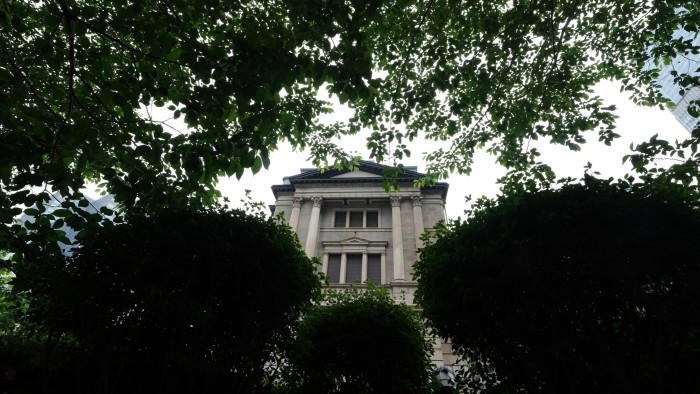Unlock the Editor’s Digest for free
Roula Khalaf, Editor of the FT, selects her favourite stories in this weekly newsletter.
A surge in long-term borrowing costs, high inflation and a month-long string of weak debt auctions are raising the pressure on the Bank of Japan ahead of its monetary policy meeting next week.
Yields on 30-year bonds hit a record high of 3.2 per cent last month, pushed up by an ongoing buyers strike among domestic life insurers. While they have since dipped to about 2.9 per cent, many analysts see a tricky balancing act for the BoJ, which has been easing off on its long-running bond-buying programme. Yields move inversely to prices.
The BoJ meeting comes as the government considers whether to buy back previously issued long-dated bonds in what would be a highly unusual measure aimed at calming the market, according to sources familiar with its thinking.
Almost no one in the market expects the central bank to raise interest rates from their current level of about 0.5 per cent at the meeting, particularly given that weeks of tariff negotiations between Tokyo and Washington have failed to result in an agreement, leaving Japanese financial markets shrouded in uncertainty.
A growing number of economists suspect the BoJ will not raise rates until early next year, although markets still ascribe a roughly 50 per cent probability to an increase by December and a significant minority believe it could move in October. A rise could come even sooner, say some economists, if volatility calms to the point that the yen starts to resume its depreciation against the US dollar.
The predominant focus of next week, say traders, will be on how the BoJ plans to proceed with a programme that began a year ago and which involves the central bank reducing the pace of its once colossal purchases of Japanese government bonds.
The BoJ’s decision on this involves canvassing opinions from both buy and sell-side market participants.
Since last year, the central bank has been reducing purchases of JGBs by ¥400bn ($2.8bn) per quarter. Analysts at Citi said they expected the reductions to continue at that pace through the first quarter of next year, but that it would then be halved to ¥200bn per quarter for the 12 months from April.
Tapering bond purchases “is now on autopilot, and if there is any hawkish action going forward it is likely to be in policy rate settings”, said Katsuhiko Aiba, Citi Japan economist.
Economists at Goldman Sachs forecast a slower pace of purchase reductions over the course of the coming year until they reach a level of ¥2tn per month.
A key focus, said economists at Bank of America, would be whether the BoJ signals that it plans to conduct another interim assessment in 2026 and whether it expresses its view on the appropriate “terminal” purchase amount of JGBs, or the amount it buys some years in the future.
Speculation has also grown that the Ministry of Finance could decide to scale back issuance at the super-long end, after it emerged last month that it had begun canvassing prime brokers and other market participants over their perception of the market.
https://www.ft.com/content/79de0608-cc1f-4dbe-8584-d36d64c6bfe3


